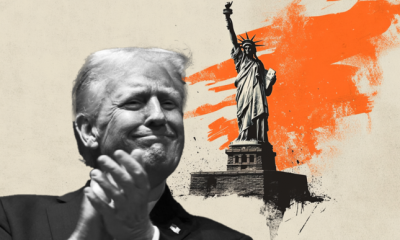

others
Mexican Peso edges against US Dollar ahead of Powell’s testimony – Crypto News
- Mexican Peso strengthens, marking over 0.5% weekly gain as USD/MXN reaches a new seven-week low at 16.91.
- US ISM Services PMI for February indicates a slowing economy, fueling speculation of forthcoming Federal Reserve rate cuts.
- US Dollar Index dips slightly as market participants increasingly anticipate a potential policy shift by the Fed toward easing interests by year-end.
The Mexican Peso appreciates sharply against the US Dollar, extending its weekly gains to more than 0.5% as the USD/MXN plunges sharply below the 17.00 figure, falling to a seven-week low. Economic data from the United States (US) showed the economy is slowing and weighed on the Greenback as the Federal Reserve’s (Fed) rate cut speculations grew. The USD/MXN trades at 16.91, down 0.21%.
Mexico’s economic docket was empty on Tuesday, but one day ago a report by the National Statistics Agency (INEGI) showed that Gross Fixed Investment in December remained flat MoM. Nevertheless, on an annual basis, it dipped from 19.2% to 13.4%.
In the US, the latest Institute for Supply Management (ISM) Services Purchasing Managers Index (PMI) revealed that the sector cooled down in February, spurring worries about an economic downturn. Therefore, investors had begun to readjust their expectations of possible Fed interest rate cuts toward the end of the year. Consequently, the US Dollar Index (DXY), which tracks the buck’s value against a basket of six currencies, dropped 0.06% to 103.77.
In the meantime, USD/MXN traders are eyeing Fed Chair Jerome Powell’s testimony before Congress on Wednesday.
Daily digest market movers: Mexican Peso boosted by broad US Dollar weakness
- A Reuters poll shows 15 analysts estimate that inflation will slow down in February, corroborating bets that the Bank of Mexico (Banxico) could cut rates as soon as the March 21 meeting.
- The survey showed that the Consumer Price Index (CPI) is expected to dip from 4.88% to 4.42%, while underlying CPI is seen falling to 4.62%, its lowest level since June 2021.
- Mexico’s General Election campaign started on March 1. Polls suggest the ruling party’s nominee, Claudia Sheinbaum, maintains her lead over Xochitl Galvez. Parametria’s poll shows Sheinbaum’s support at 49%, while Galvez, the opposition candidate, stands at 29%.
- Banxico’s February private analysts poll projections for 2024:
- General inflation is foreseen at 4.10%, while underlying inflation is expected at 4.06%.
- The economy is expected to grow 2.40%, unchanged from January.
- The USD/MXN exchange rate would end the year at 18.31, down from 18.50.
- Interest rates are expected to be lowered from 11.25% to 9.50%.
- During Banxico’s quarterly report, policymakers acknowledged the progress on inflation and urged caution against premature interest rate cuts. Governor Victoria Rodriguez Ceja said adjustments would be gradual, while Deputy Governors Galia Borja and Jonathan Heath called for prudence. The latter specifically warned against the risks of an early rate cut.
- Banxico updated its economic growth projections for 2024 from 3.0% to 2.8% YoY and maintained 1.5% for 2025. The slowdown is blamed on higher interest rates at 11.25%, which sparked a shift in three of the five governors of the Mexican Central Bank, who are eyeing the first rate cut at the March 21 meeting.
- The latest inflation report in Mexico showed that headline and underlying inflation continued to dip toward Banxico’s goal of 3%, plus or minus 1%, while economic growth exceeded estimates but finished below Q3’s 3.3%.
- Economic trade issues between Mexico and the US could depreciate the Mexican currency if the Mexican government fails to resolve its steel and aluminum dispute with the United States. US Trade Representative Katherine Tai warned the US could reimpose tariffs on the commodities.
- US economic data hurts the prospects for a higher USD/MXN, with buyers failing to keep the exchange rate above the 17.00 figure.
- US Factory Orders plunged from -2.9% MoM to -3.6% in January.
- The ISM Services PMI in February was 52.6, below estimates of 53 and January’s 53.4.
- The CME FedWatch Tool shows traders are expecting 99 basis points of rate cuts by the Fed in 2024.
Technical analysis: Mexican Peso rallies as USD/MXN tumbles below 17.00
The USD/MXN resumed to the downside after achieving a daily close below the 17.00 figure on Monday, sponsoring a leg down toward the seven-week low of 16.89. Further downside is seen at the current yearly low of 16.78, followed by last year’s 16.62.
On the other hand, if buyers reclaim the 17.00 figure, that could open the door to testing the 50-day Simple Moving Average (SMA) at 17.06, followed by the 200-day SMA at 17.24.
USD/MXN Price Action – Daily Chart
Central banks FAQs
Central Banks have a key mandate which is making sure that there is price stability in a country or region. Economies are constantly facing inflation or deflation when prices for certain goods and services are fluctuating. Constant rising prices for the same goods means inflation, constant lowered prices for the same goods means deflation. It is the task of the central bank to keep the demand in line by tweaking its policy rate. For the biggest central banks like the US Federal Reserve (Fed), the European Central Bank (ECB) or the Bank of England (BoE), the mandate is to keep inflation close to 2%.
A central bank has one important tool at its disposal to get inflation higher or lower, and that is by tweaking its benchmark policy rate, commonly known as interest rate. On pre-communicated moments, the central bank will issue a statement with its policy rate and provide additional reasoning on why it is either remaining or changing (cutting or hiking) it. Local banks will adjust their savings and lending rates accordingly, which in turn will make it either harder or easier for people to earn on their savings or for companies to take out loans and make investments in their businesses. When the central bank hikes interest rates substantially, this is called monetary tightening. When it is cutting its benchmark rate, it is called monetary easing.
A central bank is often politically independent. Members of the central bank policy board are passing through a series of panels and hearings before being appointed to a policy board seat. Each member in that board often has a certain conviction on how the central bank should control inflation and the subsequent monetary policy. Members that want a very loose monetary policy, with low rates and cheap lending, to boost the economy substantially while being content to see inflation slightly above 2%, are called ‘doves’. Members that rather want to see higher rates to reward savings and want to keep a lit on inflation at all time are called ‘hawks’ and will not rest until inflation is at or just below 2%.
Normally, there is a chairman or president who leads each meeting, needs to create a consensus between the hawks or doves and has his or her final say when it would come down to a vote split to avoid a 50-50 tie on whether the current policy should be adjusted. The chairman will deliver speeches which often can be followed live, where the current monetary stance and outlook is being communicated. A central bank will try to push forward its monetary policy without triggering violent swings in rates, equities, or its currency. All members of the central bank will channel their stance toward the markets in advance of a policy meeting event. A few days before a policy meeting takes place until the new policy has been communicated, members are forbidden to talk publicly. This is called the blackout period.
-
others1 week ago
JPY soft and underperforming G10 in quiet trade – Scotiabank – Crypto News
-
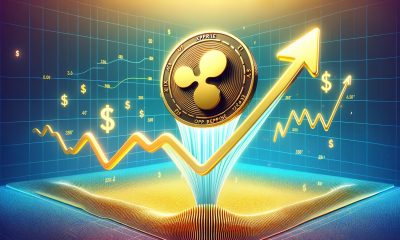
 Blockchain1 week ago
Blockchain1 week agoXRP Price Gains Traction — Buyers Pile In Ahead Of Key Technical Breakout – Crypto News
-

 Technology7 days ago
Technology7 days agoSam Altman says OpenAI is developing a ‘legitimate AI researcher’ by 2028 that can discover new science on its own – Crypto News
-

 De-fi1 week ago
De-fi1 week agoNearly Half of US Retail Crypto Holders Haven’t Earned Yield: MoreMarkets – Crypto News
-

 De-fi6 days ago
De-fi6 days agoBittensor Rallies Ahead of First TAO Halving – Crypto News
-

 Technology1 week ago
Technology1 week agoMicrosoft ‘tricked users into pricier AI-linked 365 plans,’ says Australian watchdog; files lawsuit – Crypto News
-

 De-fi1 week ago
De-fi1 week agoAI Sector Rebounds as Agent Payment Systems Gain Traction – Crypto News
-

 Blockchain1 week ago
Blockchain1 week agoBig Iran Bank Goes Bankrupt, Affecting 42 Million Customers – Crypto News
-
Business1 week ago
Crypto Market Rally: BTC, ETH, SOL, DOGE Jump 3-7% as US China Trade Talks Progress – Crypto News
-

 Cryptocurrency1 week ago
Cryptocurrency1 week agoBitcoin Accumulation Patterns Show Late-Stage Cycle Maturity, Not Definite End: CryptoQuant – Crypto News
-
Technology1 week ago
Ethereum Supercycle Strengthens as SharpLink Gaming Withdraws $78.3M in ETH – Crypto News
-
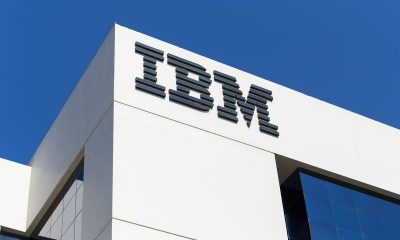
 Blockchain1 week ago
Blockchain1 week agoIBM Set to Launch Platform for Managing Digital Assets – Crypto News
-
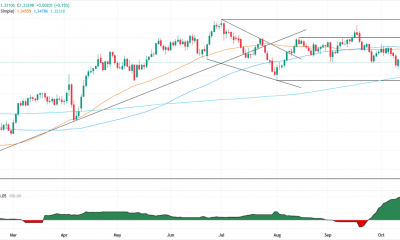
 others1 week ago
others1 week agoGBP/USD floats around 1.3320 as softer US CPI reinforces Fed cut bets – Crypto News
-
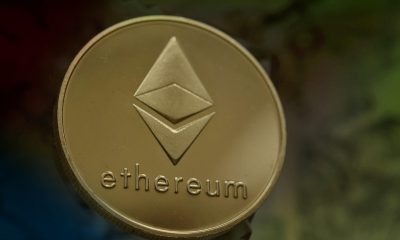
 Blockchain1 week ago
Blockchain1 week agoEthereum Rebounds From Bull Market Support: Can It Conquer The ‘Golden Pocket’ Next? – Crypto News
-

 Cryptocurrency1 week ago
Cryptocurrency1 week agoWestern Union eyes stablecoin rails in pursuit of a ‘super app’ vision – Crypto News
-

 De-fi1 week ago
De-fi1 week agoNearly Half of US Retail Crypto Holders Haven’t Earned Yield: MoreMarkets – Crypto News
-
others1 week ago
Indian Court Declares XRP as Property in WazirX Hack Case – Crypto News
-

 Blockchain1 week ago
Blockchain1 week agoSolana Eyes $210 Before Its Next Major Move—Uptrend Or Fakeout Ahead? – Crypto News
-

 De-fi1 week ago
De-fi1 week agoHYPE Jumps 10% as Robinhood Announces Spot Listing – Crypto News
-
others1 week ago
Platinum price recovers from setback – Commerzbank – Crypto News
-

 De-fi1 week ago
De-fi1 week agoREP Jumps 50% in a Week as Dev Gets Community Support for Augur Fork – Crypto News
-
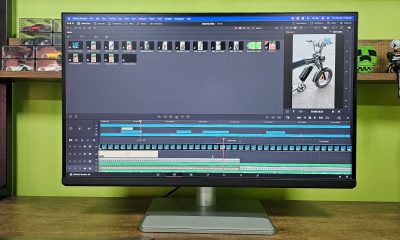
 Technology1 week ago
Technology1 week agoBenQ MA270U review: A 4K monitor that actually gets MacBook users right – Crypto News
-

 De-fi6 days ago
De-fi6 days agoBitcoin Dips Under $110,000 After Fed Cuts Rates – Crypto News
-

 Blockchain1 week ago
Blockchain1 week agoEntire Startup Lifecycle to Move Onchain – Crypto News
-

 De-fi1 week ago
De-fi1 week agoNearly Half of US Retail Crypto Holders Haven’t Earned Yield: MoreMarkets – Crypto News
-

 Blockchain1 week ago
Blockchain1 week agoXRP/BTC Retests 6-Year Breakout Trendline, Analyst Calls For Decoupling – Crypto News
-

 Cryptocurrency1 week ago
Cryptocurrency1 week agoUSDJPY Forecast: The Dollar’s Winning Streak Why New Highs Could Be At Hand – Crypto News
-
others1 week ago
Is Changpeng “CZ” Zhao Returning To Binance? Probably Not – Crypto News
-
Business1 week ago
Crypto ETFs Attract $1B in Fresh Capital Ahead of Expected Fed Rate Cut This Week – Crypto News
-

 De-fi1 week ago
De-fi1 week agoTokenized Nasdaq Futures Enter Top 10 by Volume on Hyperliquid – Crypto News
-

 Cryptocurrency1 week ago
Cryptocurrency1 week agoNEAR’s inflation reduction vote fails pass threshold, but it may still be implemented – Crypto News
-

 Technology1 week ago
Technology1 week agoSurvival instinct? New study says some leading AI models won’t let themselves be shut down – Crypto News
-

 De-fi1 week ago
De-fi1 week agoMetaMask Fuels Airdrop Buzz With Token Claim Domain Registration – Crypto News
-
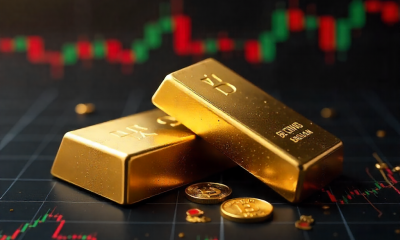
 Cryptocurrency1 week ago
Cryptocurrency1 week agoGold Price Forecast 2025, 2030, 2040 & Investment Outlook – Crypto News
-
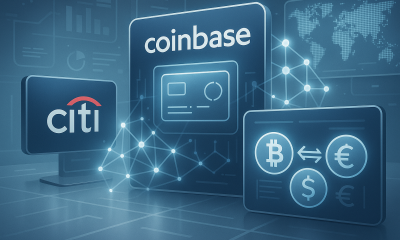
 Cryptocurrency1 week ago
Cryptocurrency1 week agoCitigroup and Coinbase partner to expand digital-asset payment capabilities – Crypto News
-

 Cryptocurrency1 week ago
Cryptocurrency1 week agoInside Bitwise’s milestone solana ETF launch – Crypto News
-

 Cryptocurrency1 week ago
Cryptocurrency1 week agoWhy Is Pi Network’s (PI) Price Up by Double Digits Today? – Crypto News
-
others7 days ago
Can ASTER Price Rebound 50% as Whale Activity and Bullish Pattern Align? – Crypto News
-

 Technology6 days ago
Technology6 days agoGiving Nvidias Blackwell chip to China would slash USs AI advantage, experts say – Crypto News
-

 Business6 days ago
Business6 days agoStarbucks Says Turnaround Strategy Drives Growth in Global Sales – Crypto News
-

 others1 week ago
others1 week agoGold weakens as US-China trade optimism lifts risk sentiment, focus turns to Fed – Crypto News
-

 De-fi1 week ago
De-fi1 week agoCRO Jumps After Trump’s Truth Social Announces Prediction Market Partnership with Crypto.Com – Crypto News
-

 Cryptocurrency1 week ago
Cryptocurrency1 week agoKERNEL price goes vertical on Upbit listing, hits $0.23 – Crypto News
-
Technology1 week ago
Breaking: $2.6B Western Union Announces Plans for Solana-Powered Stablecoin by 2026 – Crypto News
-

 Blockchain1 week ago
Blockchain1 week agoVisa To Support Four Stablecoins on Four Blockchains – Crypto News
-

 De-fi1 week ago
De-fi1 week agoCrypto Market Edges Lower While US Stocks Hit New Highs – Crypto News
-
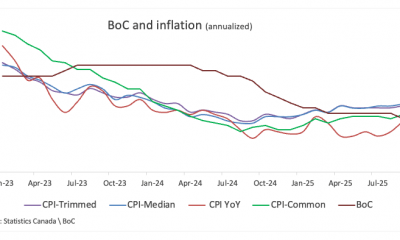
 others7 days ago
others7 days agoBank of Canada set to cut interest rate for second consecutive meeting – Crypto News
-

 Technology1 week ago
Technology1 week agoiPhone 18 Pro Max could get full internet access straight from space: All you need to know – Crypto News
-

 De-fi1 week ago
De-fi1 week agoKalshi Taps RedStone to Bring Real-World Event Data On-Chain – Crypto News
-

 Blockchain1 week ago
Blockchain1 week agoThe Next Era Of Crypto Belongs To Decentralized Markets – Crypto News



